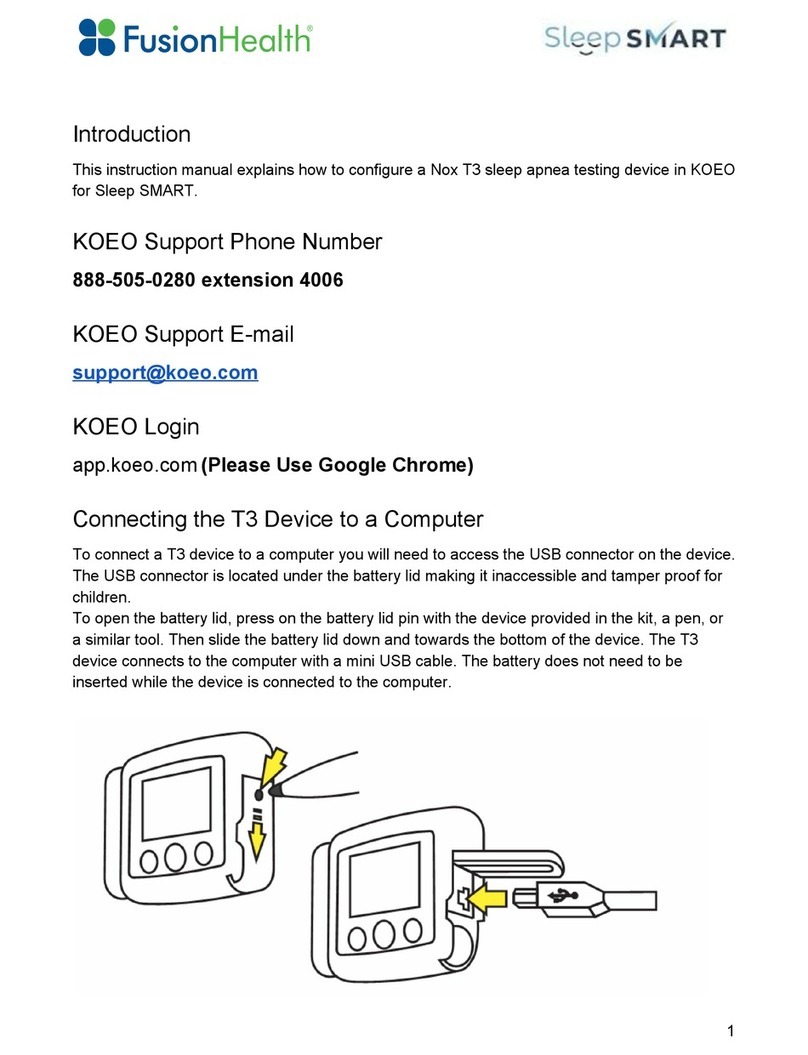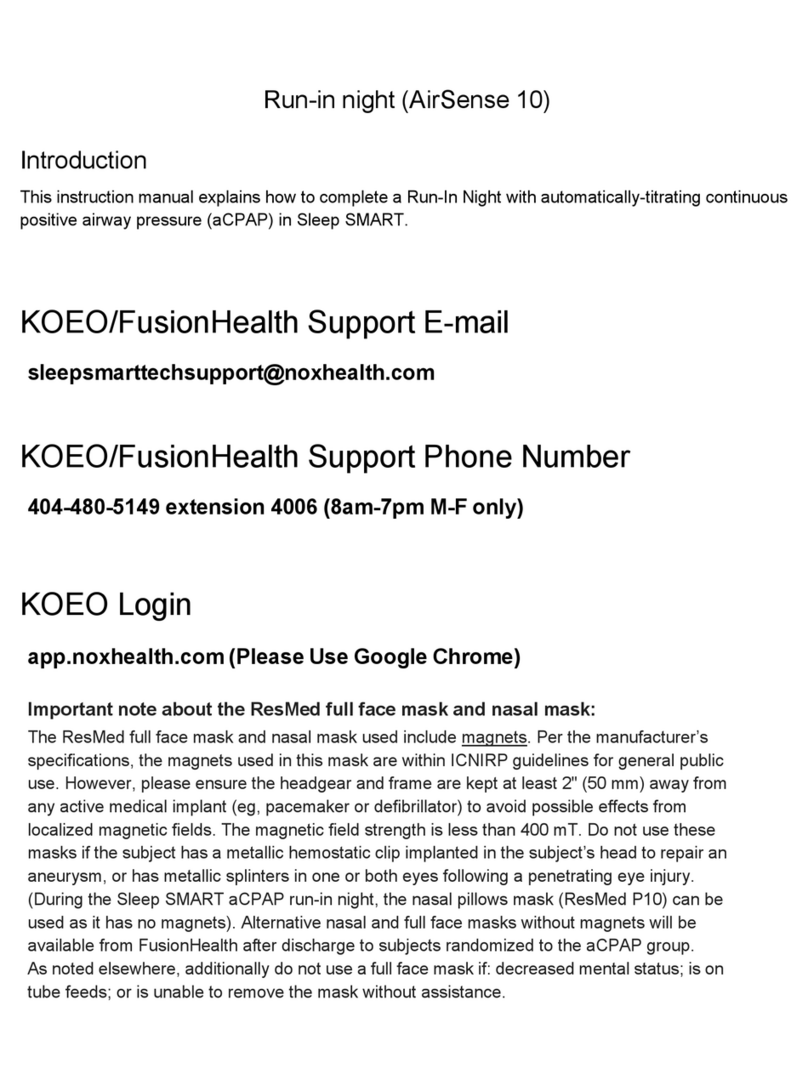
1
DreamWear Mask Use and Fitting for the Run-In Night
General Approach
1. Fit all subjects with the DreamWear nasal mask with under-the-nose cushion.
2. Check the mask fit using the aCPAP mask fit function as described on page 17 of this
manual. Adjust the mask accordingly.
3. If a subject cannot use the nasal mask (e.g. uncomfortable, difficulty breathing through nose
because of nasal congestion), please visually show the subject both the DreamWear full face
mask and DreamWear nasal pillows, and have him/her select the preferred style. If the
subject has no preference, try the full face mask next. The full face mask contains magnets,
so do not select if this is contraindicated. Use the aCPAP mask fit function (pg 17) to confirm
fit. Make adjustments accordingly.
4. Use the fitted mask for the 15-20-minute daytime trial prior to the run-in night. Make
adjustments to optimize comfort.
Document contents:
This document reviews details about how to use the (1) DreamWear Nasal Mask (pg 2-5), (2)
DreamWear Full Face Mask (pg 6-11), and (3) DreamWear Nasal Pillows (pg 12-16), including:
•Cautions
•The contents of the box
•Assembly/disassembly
•Mask fit
•Mask placement
•Mask adjustment
•Mask use
•Mask removal
•Mask cleaning (for study teams to have knowledge to discuss with randomized
participants)
Page 17 reviews the aCPAP mask fit function. This is followed by an illustrated summary of
mask fitting for all three mask types (pg 18-20).
Mask Fitting Assistance/FusionHealth Technical Support:
Call: 470-655-6688, 8am-7pm M-F
Email: sleepsmarttechsupport@noxhealth.com, anytime





























